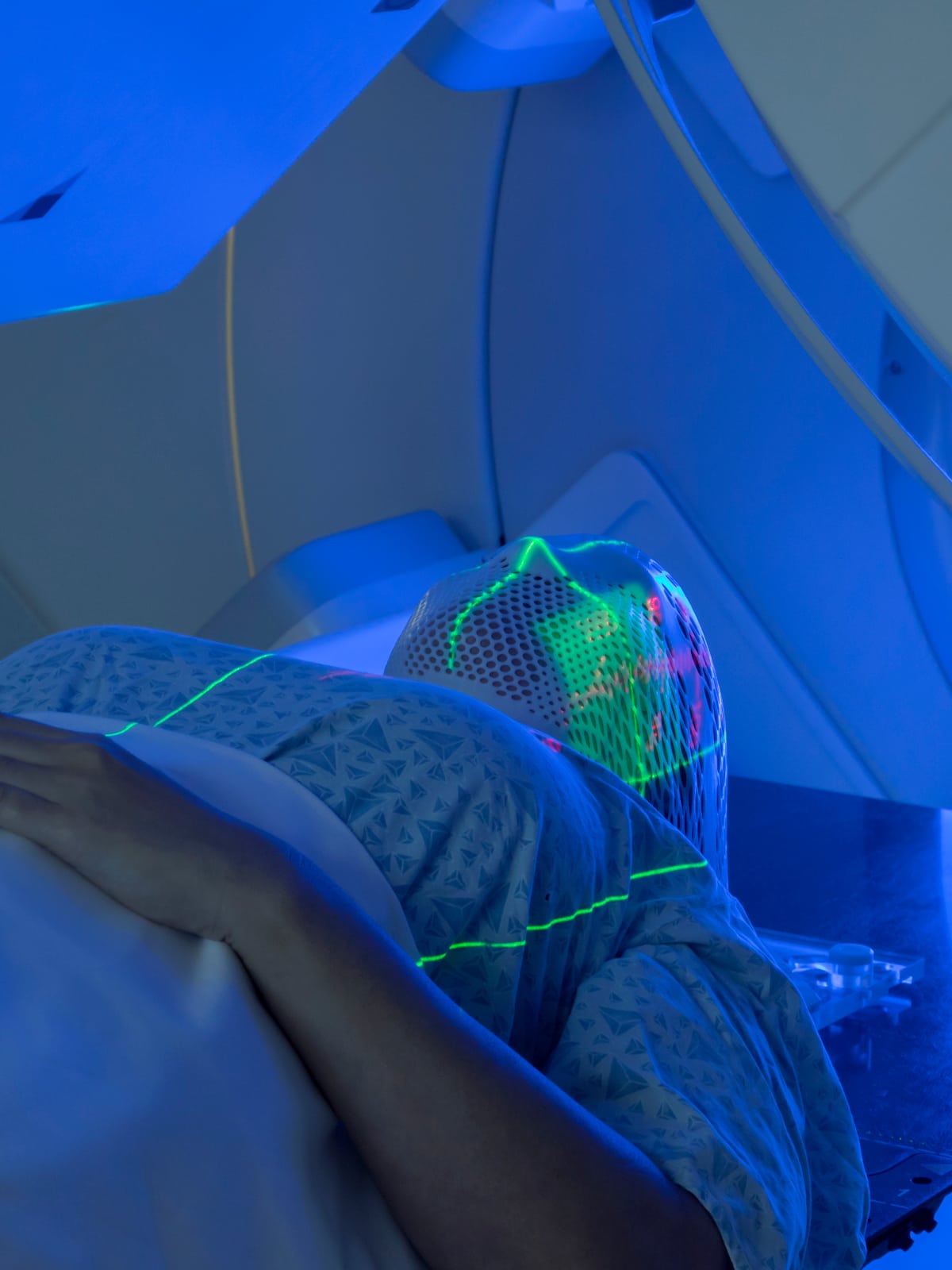Hyperbaric oxygen therapy for delayed radiation injury
- Wesley Hyperbaric

Radiation therapy side effects
Complications of radiation therapy
Delayed radiation complications are typically seen after a latent period of several months. The most common types of radiation injuries treated at Wesley Hyperbaric are:
- Radiation cystitis: inflammation and damage to the bladder lining
- Proctitis/colitis: inflammation and damage to the rectum and colon
- Osteoradionecrosis: the death of bone tissue
- Xerostomia: reduced or absent production of saliva
- Radiation-induced cutaneous ulceration: the development of ulcers on the skin
We don’t treat acute radiation injuries or injuries that occur immediately after treatment. They tend to resolve naturally over time and are treated in such a way as to address the patient’s symptoms. Unfortunately, chronic complications of radiation therapy often may not improve with time and are likely to worsen.
Hyperbaric Oxygen Therapy is a recognised treatment for delayed radiation injuries. However, it is not a first-line treatment and generally HBOT is reserved for more severe cases or those that have not responded to other treatments. Patients and healthcare providers should work together to determine the most appropriate treatment plan based on the individual’s specific symptoms and medical history.
If you are new to HBOT, and you’re curious about what it is, please read our What is HBOT page. If you already know what it is, and you’re curious to learn how HBOT can help with delayed radiation injuries, keep reading.
Delayed radiation injury
Types of delayed radiation injuries
The severity of soft tissue radiation injuries can vary widely and depends on the location and intensity of the radiation, as well as other factors such as your overall health and the presence of other medical conditions.
Some of the most common types of soft tissue radiation injuries include:
- Skin damage: Radiation can cause damage to the skin, leading to symptoms such as redness, swelling, blistering, and ulceration. In severe cases, radiation dermatitis can occur, which is a painful condition characterised by widespread skin damage and breakdown.
- Mucosal damage: Radiation can also damage the mucous membranes of the mouth, throat, and gastrointestinal tract, leading to symptoms such as dry mouth, difficulty swallowing, and diarrhoea.
- Fibrosis: Fibrosis is a condition in which the connective tissues surrounding the radiation-damaged area become stiff and less flexible, leading to symptoms such as pain and reduced mobility.
- Lymphoedema: Radiation therapy can damage the lymphatic system, leading to lymphoedema in the affected area. Lymphoedema is a condition in which excess fluid accumulates in the tissues, causing swelling and discomfort.
- Necrosis: Necrosis is a condition in which tissue death occurs due to radiation damage. This can lead to pain, ulceration, and other symptoms.
Hyperbaric oxygen therapy for delayed radiation injury
Treatment options for radiation injuries
There are several treatment options available for radiation injuries. The specific treatment depends on your symptoms and the severity of the injury.
Some of the most common treatment options for radiation injuries include:
- Pain management: Radiation injuries can cause pain, and pain management strategies may include over-the-counter pain relievers, prescription medications, and alternative therapies such as acupuncture.
- Wound care: For skin injuries caused by radiation therapy, wound care can help manage symptoms such as skin breakdown and ulceration. This may include topical treatments, dressings, and other wound care strategies.
- Anti-inflammatory medications: Inflammation is a common symptom of radiation injury, and medications such as corticosteroids may be used to help reduce inflammation.
- Surgery: In some cases, surgery may be necessary to remove damaged tissues or repair injuries caused by radiation.
- Physical therapy: Physical therapy can help improve your range of motion and reduce pain and stiffness caused by radiation injuries.
- Nutritional support: Radiation therapy can cause side effects such as nausea, vomiting, and loss of appetite, so nutritional support may be necessary to ensure that you are receiving adequate nutrients.
If none of these treatments is adequate, your doctor may refer you to Wesley Hyperbaric in Brisbane for hyperbaric oxygen therapy (HBOT).
Additionally, HBOT has been found to have anti-inflammatory and antioxidant effects, which can help reduce inflammation and oxidative stress caused by radiation exposure.
Overall, hyperbaric oxygen therapy can be a beneficial treatment for radiation injuries by promoting tissue healing, reducing inflammation and oxidative stress, and improving blood flow to the damaged tissues.
Hyperbaric oxygen therapy Brisbane
Wesley Hyperbaric for delayed radiation injuries
Wesley Hyperbaric is the largest fully accredited day hospital in Australia that offers a comprehensive hyperbaric facility. We have hyperbaric-trained doctors and nursing staff in attendance at all times, ensuring that patients receive expert medical care and supervision during their hyperbaric oxygen sessions.
To learn more about HBOT, please keep reading:
For more information or to book a consultation, please get in touch with our friendly receptionists.
Please ask your GP for a referral if you want to book an appointment at Wesley Hyperbaric.